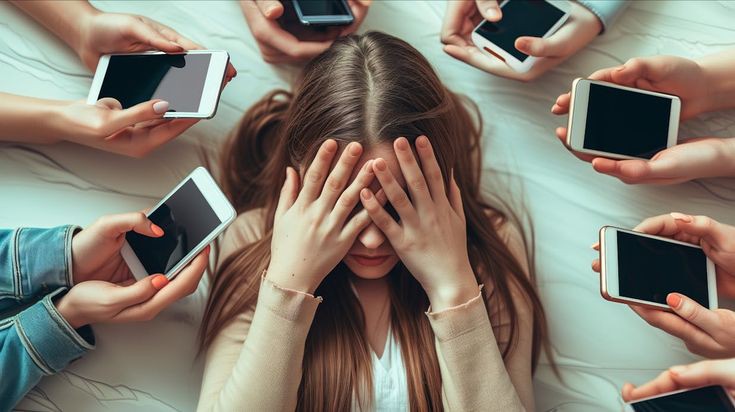From Scrolls to Souls: Why Mindful Digital Advocacy Matters

We’ve never been more connected, yet mental health issues have never been more prevalent. Technology, particularly social media, was designed to bridge the physical and emotional gaps between us, allowing families to stay close despite distance and enabling instant communication across the globe. Today, parents can watch their children grow up through video calls, and friends can share life moments in real time, no matter where they are.
Yet, the same tools meant to connect us now often leave us feeling isolated and overwhelmed. The endless scroll has become a source of anxiety, depression, and comparison fatigue. Prior to this digital age, people faced mental health challenges, but the prevalence and intensity of these issues were not as staggering as they are today. Social media, a tool of connection has paradoxically become a tool of disconnection. It’s a struggle between the mindless scrolling of our screens and the soulful connections we yearn for. That’s why the conversation around mindful digital advocacy must be at the forefront of our efforts to transform these tools into spaces of genuine connection and support.
From time immemorial, humans have sought connection. Whether through letters, telephone calls, or visits, our shared humanity is grounded in the Ubuntu philosophy: “I am because you are.” Social media was designed to enhance this innate desire, creating a global village where communication knows no bounds. However, while social media amplifies our ability to connect, it has also unintentionally magnified loneliness and anxiety. People now sit together at dinner tables, engrossed in their phones rather than in conversation. Families communicate through text despite being in the same house. Commuters on buses, trains and airplanes are glued to their screens, oblivious to the person beside them. Children and adults alike have grown so accustomed to digital interactions that in-person social integration feels foreign.
Social media is indeed a bridge, but one that can either connect us meaningfully or leave us stranded. When used mindlessly, it isolates us from our immediate realities. However, when approached mindfully, it becomes a tool for intentional connection and a platform to support mental well-being.
Problematic social media use has become a growing concern, especially among adolescents. According to the World Health Organization, the rate of problematic use among teens rose from 7% in 2018 to 11% in 2022, disproportionately affecting girls. The COVID-19 pandemic further worsened these issues, increasing screen time and amplifying feelings of loneliness, anxiety, and depression.
Social media amplifies comparison fatigue, particularly among adolescents exposed to curated, idealized content. This relentless cycle often leads to eating disorders, diminished self-esteem, and overall dissatisfaction. Additionally, the mindless scroll and endless consumption of content designed to prioritize engagement fills our minds with noise, leaving little room for meaningful connection. In resource-scarce settings, the lack of mental health education and access to support only amplifies these challenges, creating a pressing need for intervention.
Mindful digital advocacy transforms social media from a space of distraction into a platform for genuine connection and support. This means using social media intentionally to foster positive mental health impacts, such as educating users to recognize signs of distress in posts and respond empathetically. Creating safe spaces that prioritize support and inclusivity, with strategies to moderate and reduce toxicity. Advocating for ethical Algorithms that promote well-being rather than solely focusing on engagement.
SMACwellbeing is leading the way by empowering youth in resource-scarce settings to become mental health advocates. Through digital education and peer support networks, these initiatives create a ripple effect of awareness and change.
Social media is a bridge that can connect us to others or leave us disconnected from ourselves. We must move from mindless scrolling to mindful engagement, asking ourselves whether our digital habits are strengthening our souls or eroding them. As digital citizens, we have a responsibility to make these spaces empathetic and supportive. By practicing mindful digital advocacy, we can transform social media into a powerful tool for connection, understanding, and mental health. Let’s take the first step together and ensure that the bridges we build online lead to genuine connection, not isolation. What if your next scroll could be the start of saving a soul?” let us scroll less and connect more.
Stay connected with us to know how you can benefit from the SMACwellbeing initiative.
Reference
World Health Organization (WHO). (2024, September 25). Teens, Screens, and Mental Health. WHO Regional Office for Europe. Retrieved from World Health Organization News
Orji, Mary-Cynthia. (2025, March). From Scrolls to Souls: Why Mindful Digital Advocacy Matters. The Graduate Press, Spring Print Edition, Continuity and Change. Geneva Graduate Institute.


